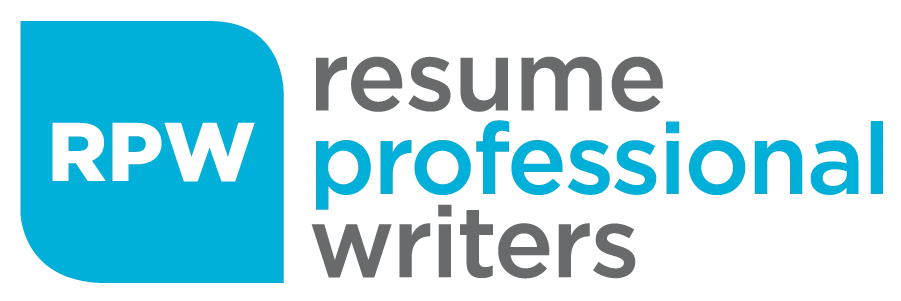Career progression is a journey filled with opportunities and challenges. Many professionals struggle to navigate this path effectively, often missing out on valuable chances for growth due to a lack of communication skills and career advancement strategies.
At Resume Professional Writers, we understand the importance of strategic career development. This guide will provide you with practical steps to identify your goals, create a robust plan, and take decisive action toward advancing your career.

Key Steps to Setting Your Career Goals Like a Pro
1. Evaluate Your Current Position
Identifying your career goals is the first step towards meaningful professional growth. Start by taking stock of your present situation. List your skills, experiences, and achievements. Be honest about your strengths, areas for improvement, and consistent performance. Communicate with your current employer to seek more challenging roles and opportunities. This self-assessment forms the foundation of your career planning.
A LinkedIn survey reveals that 44% of professionals feel stuck in their current roles. Don’t let this happen to you. Use tools like the SWOT analysis (Strengths, Weaknesses, Opportunities, Threats) to gain a comprehensive view of your professional landscape.
2. Set Clear Objectives
With a clear understanding of where you stand, it’s time to set your sights on where you want to go. Define both short-term and long-term career objectives. Short-term goals might include learning a new skill or taking on additional responsibilities in your current role. Long-term goals could involve moving into a leadership position or changing industries. Setting these objectives can open up career advancement opportunities by aligning your efforts with potential growth paths.
Make your goals SMART: Specific, Measurable, Achievable, Relevant, and Time-bound. For example, instead of “Get a promotion,” try “Secure a senior marketing position within the next 18 months by completing a digital marketing certification and leading two major campaigns.”
3. Explore Career Paths
The job market constantly evolves. Research potential career paths and industries that align with your skills and interests. The U.S. Bureau of Labor Statistics projects that employment in computer and IT occupations will grow by 13% from 2020 to 2030 (faster than the average for all occupations). Job rotation is a strategic approach to career development within organizations, enhancing employee skills and readiness for leadership roles. This kind of information can guide your career decisions.
Don’t limit yourself to traditional paths. Consider emerging fields or hybrid roles that combine different skill sets. For instance, the rise of data-driven marketing has created new opportunities for professionals with both analytical and creative skills. Additionally, participating in cross functional projects can provide valuable insights across different business areas, enhancing your effectiveness in strategic roles and boosting your career progression.
4. Leverage Your Unique Experiences
Your unique combination of experiences can be your greatest asset in carving out a distinctive career path. A ‘job family’ is part of a structured framework that categorizes different roles and career paths within an organization, providing clear ranks or categories for employees based on their skill sets and techniques. Consider how your past roles, projects, and skills (even those from seemingly unrelated fields) can apply to your desired career direction. This approach often leads to innovative career paths that blend multiple disciplines, allowing you to maintain a healthy balance with your personal life.
As you define your career goals and explore potential paths, the next step is to develop a strategic plan to turn these aspirations into reality. Let’s examine how to create a roadmap for your career success.

How to Create Your Career Progression Roadmap
1. Map Out Your Milestones
Break down your long-term career goals into smaller, manageable milestones as part of your career progression plan. Each milestone should represent a significant step towards your ultimate objective. For instance, a key milestone in the tech industry is achieving the role of a Software Development Manager, which marks the journey from entry-level positions to leadership roles. If your goal is to become a marketing director within five years, your milestones might include:
- Complete a digital marketing certification within six months
- Lead a major campaign within one year
- Secure a senior marketing position within two years
- Develop team management skills by year three
- Gain cross-departmental experience by year four
Assign specific timeframes to each milestone. This creates a sense of urgency and helps you stay on track. These timelines are flexible and can be adjusted as you progress.
2. Bridge Your Skills Gap
Identify the skills and qualifications necessary to reach each milestone. Compare these with your current skill set to pinpoint areas for improvement. The World Economic Forum reports that 42% of jobs will require digital skills by 2025. Training programs are a critical component of employee development initiatives, helping to retain top talent and foster a high-performance culture. Stay ahead of the curve by prioritizing in-demand skills in your industry.
Create a learning plan to acquire these skills. This might involve:
- Enroll in online courses or workshops
- Attend industry conferences and seminars
- Seek stretch assignments at work
- Volunteer for projects outside your comfort zone
- Participate in training courses offered by your employer
Platforms like Coursera, edX, and LinkedIn Learning offer a wide range of courses to help you upskill. Many employers also offer tuition reimbursement programs – take advantage of these opportunities.
3. Expand Your Professional Network
Networking is a powerful tool for career advancement and discovering new career opportunities. Creating detailed and competency-based job descriptions that align with career development frameworks is crucial for setting clear expectations for roles and skills within an organization. According to LinkedIn, 70% of professionals get hired at companies where they have a connection. Build and nurture your professional relationships through:
- Attend industry events and meetups
- Join professional associations in your field
- Engage actively on LinkedIn and other professional social media platforms
- Participate in online forums and discussions related to your industry
Don’t just focus on senior professionals. Peer-to-peer networking can also lead to valuable opportunities and insights.
Networking is about giving as much as receiving. Offer help and support to others in your network. This builds goodwill and often leads to reciprocal assistance when you need it.
4. Adapt and Evolve
The job market is dynamic, and flexibility is key to long-term success. Navigating your career path is an ongoing process that demands adaptability. The evolution of career progression within the corporate organization has seen significant changes, particularly after WWII, with a shift towards flatter structures and the decline of traditional career paths. Be prepared to adapt your plan as new opportunities and challenges arise. Try to reassess your goals and progress regularly (perhaps quarterly or bi-annually). This allows you to make necessary adjustments and stay aligned with your ultimate career objectives.
As you implement these strategies to create a solid foundation for your career progression, it’s time to take concrete actions that will propel you forward. Let’s explore the specific steps you can take to advance your career in the next section.

How to Take Action and Advance Your Career
1. Invest in Continuous Learning
Career progression requires more than planning-it demands decisive action. To advance your career, you must actively pursue opportunities for growth, learning, and development.
The job market evolves constantly, and staying relevant means updating your skills regularly. The World Economic Forum reports that 50% of all employees will need reskilling by 2025. This statistic underscores the importance of ongoing education and training.
Try to find courses, workshops, or certifications that align with your career goals. For example, if you work in marketing, consider obtaining a Google Analytics certification. If you’re in project management, a PMP certification could significantly boost your credentials.
Many companies offer tuition reimbursement programs. Take advantage of these if available. If not, platforms like Coursera, edX, and Udemy offer affordable options for professional development. Investing in your skills is an investment in your future.
2. Leverage Mentorship and Professional Guidance
Mentorship can transform your career progression. A study by the Association for Talent Development found that professionals with mentors are 20% more likely to get a raise than those without. Mentors provide invaluable insights, help you navigate workplace challenges, and can open doors to new opportunities.
Look for mentors within your organization or industry. Professional associations often have mentorship programs you can join. Don’t limit yourself to just one mentor-different mentors can offer diverse perspectives and expertise.
If finding a mentor proves challenging, consider working with a career coach. A coach can help you refine your goals, develop strategies, and overcome obstacles in your career path.
3. Seize Growth Opportunities in Your Current Role
Advancing your career doesn’t always mean changing jobs. There are often untapped opportunities for growth within your current role or company. Be proactive in seeking these out.
Volunteer for challenging projects, especially those that stretch your skills or expose you to new areas of the business. This not only enhances your skill set but also increases your visibility within the organization.
Cross-functional collaboration is another excellent way to broaden your experience. Offer to assist other departments or teams on projects. This expands your network within the company and gives you a more holistic understanding of the business.
Don’t shy away from feedback. Regularly seek input from your manager and colleagues on your performance. Use this feedback to identify areas for improvement and to showcase your growth mindset.
4. Optimize Your Professional Brand
In today’s digital age, your online presence can significantly impact your career progression. Optimize your LinkedIn profile (ensure it’s 100% complete) and consider creating a personal website or portfolio to showcase your work and expertise.
Engage in thought leadership by writing articles, participating in industry forums, or speaking at events. This positions you as an expert in your field and can attract new opportunities.
5. Network Strategically
Networking remains a powerful tool for career advancement. According to LinkedIn, 70% of professionals get hired at companies where they have a connection. Build and nurture your professional relationships through:
- Industry events and meetups
- Professional associations in your field
- Active engagement on LinkedIn and other professional social media platforms
- Participation in online forums and discussions related to your industry
Don’t just focus on senior professionals. Peer-to-peer networking can also lead to valuable opportunities and insights. Networking is about giving as much as receiving. Offer help and support to others in your network. This builds goodwill and often leads to reciprocal assistance when you need it.

Strategic Planning and Continuous Growth for Career Success
Career progression requires strategic planning and proactive action. Start by setting clear goals and creating a roadmap to guide your professional journey. Success is achieved through consistent effort, adaptability, and a readiness to view challenges as opportunities for growth.
To stay competitive, continuously invest in your skills and knowledge, keeping pace with industry trends. Building meaningful professional relationships and seeking guidance from mentors can provide valuable insights and support. Additionally, take control of your professional brand by optimizing your online presence and showcasing your expertise, which can significantly influence your career trajectory.
As you advance, regularly assess your progress and refine your strategies to remain aligned with your evolving goals. Embrace feedback as a tool for improvement and remain open to change, as flexibility can open doors to new opportunities. Remember, persistence and a growth mindset are crucial to achieving sustained, long-term success.
Take Charge of Your Career Progression Today
Career advancement is a journey that requires both strategy and action. In this guide, you’ve learned how to identify your career goals, create a detailed roadmap, and take concrete steps toward achieving professional success. By continuously learning, leveraging mentorship, seizing growth opportunities, and optimizing your professional brand, you’re setting yourself up for long-term growth and fulfillment in your career.
As you advance on your career path, having expert support can be crucial. If you need to refine your resume, our expert resume writing services at Resume Professional Writers are designed to help you stand out and achieve your career goals.
Don’t let your next opportunity pass you by — partner with us and take the first step toward a brighter future today.








